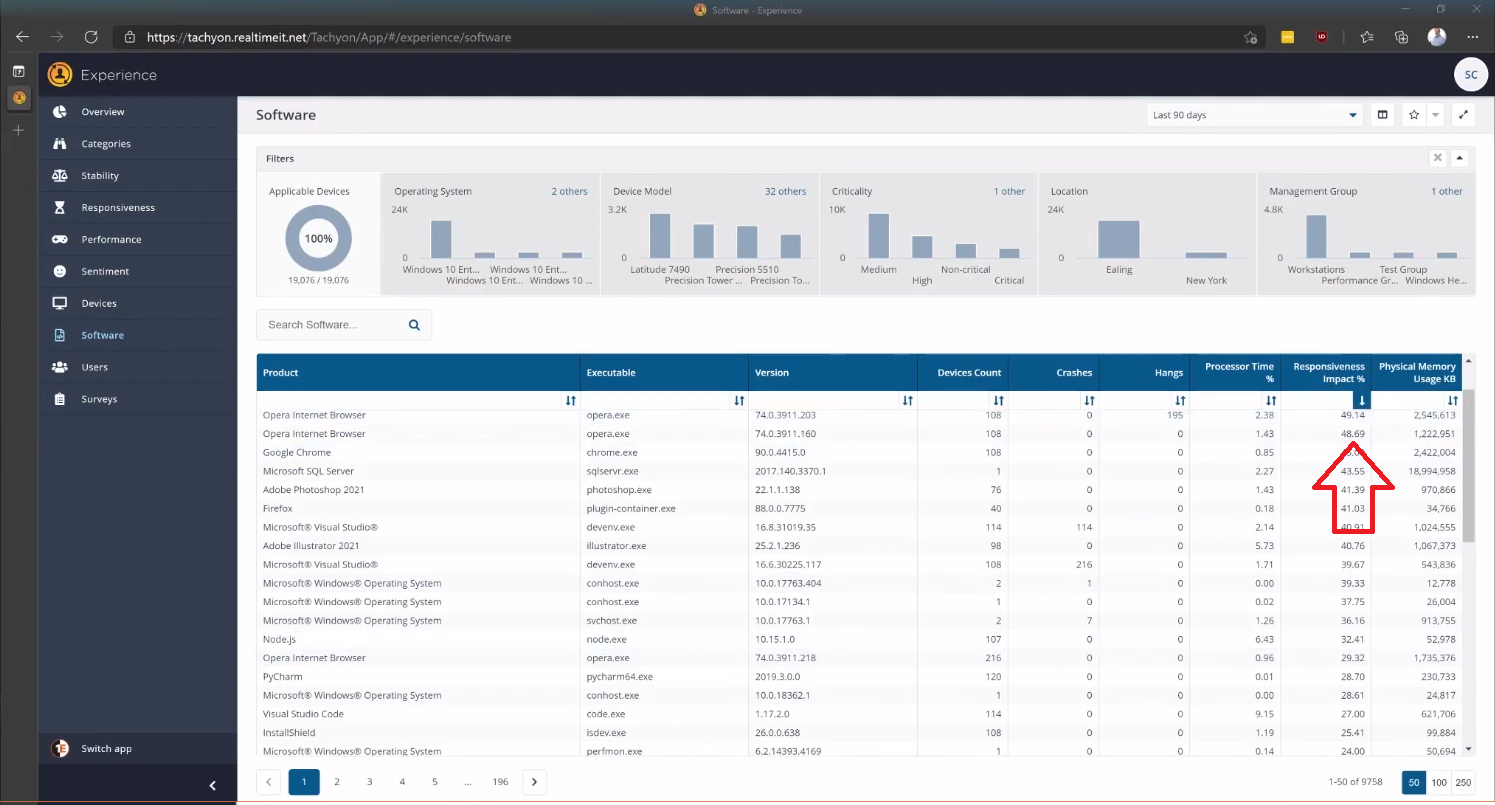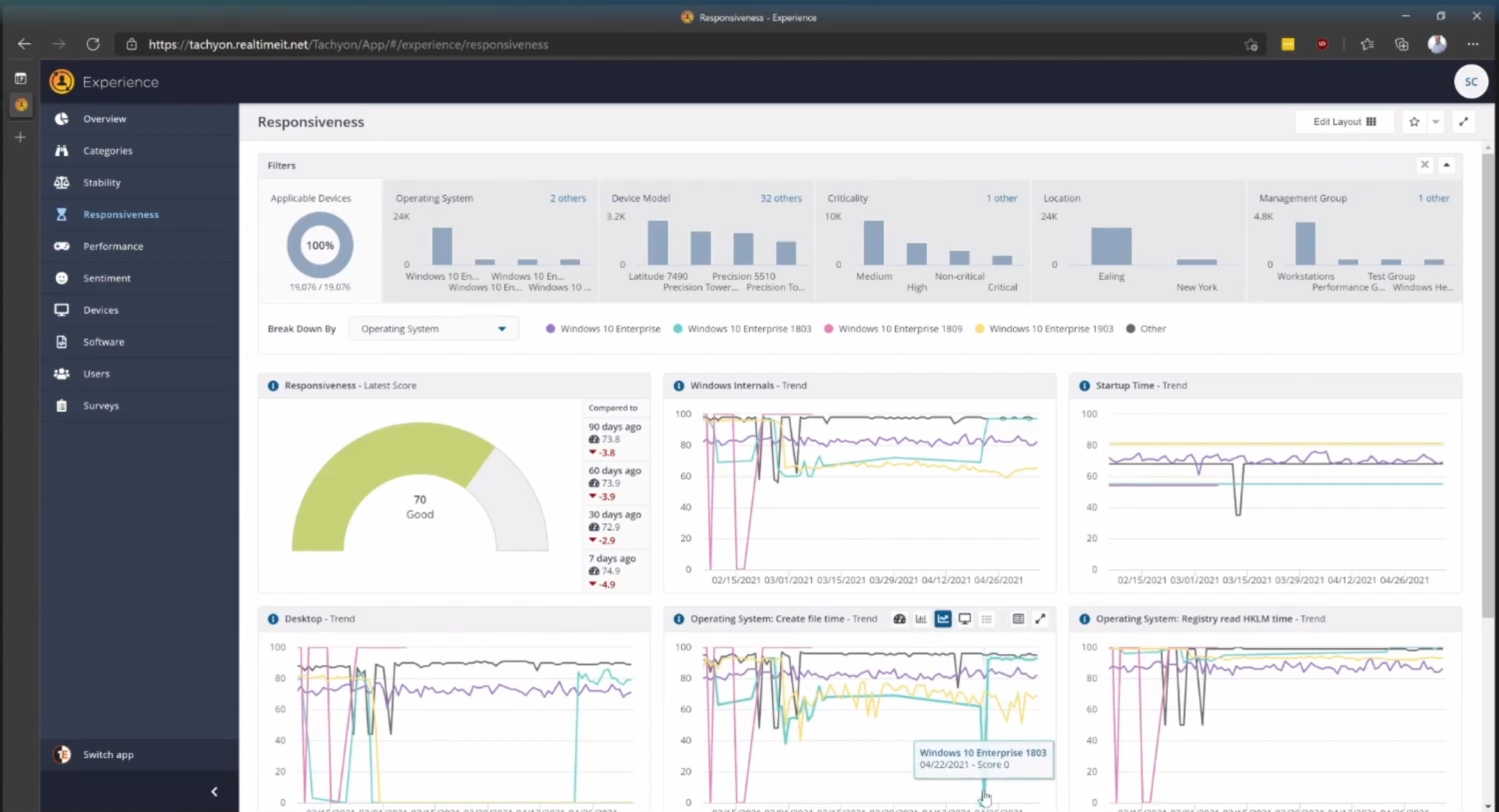Introduction
I’m currently blogging about a series of DEM in 20 webinars from 1E, you can find each episode that I’ve blogged about (including this one) below:
- Episode 1. How to find and fix Slow Endpoints <- you are here
- Episode 2. That crashy app
- Episode 3. Dealing with annoying admin requests
- Episode 4. That Change Management Success Rate Struggle
- Episode 5. Will Printer Audits continue to exist?
- Episode 6. Are non compliant devices dangerous ?
I’m sure we are all familiar with a slow running machine, it can happen at that exact moment when you least want it to occur, for example just before a meeting is about to start or on first power up after the weekend on a Monday morning. When it happens, everything seems to crawl, or is non-responsive.
In desperation you click on an icon to spring it to life but nothing happens, so you click it again, and again…but the computer seemingly just ignores your actions as it is overloaded, slow and clearly busy doing something else.
To add insult to injury, after a few minutes of non-responsiveness, those icons you clicked on earlier suddenly spring to life, and open all at the same time.
Ever experienced that ?
Multiple copies of the same program opening one after the other…
I know I have experienced it and sadly a little bit too often during my working week. If this also sounds familiar to you then you are not alone, this is a very common problem as you can see based on google search results.
 Non tech-savvy people might trust a bunch of the first hits generated by that search, and think that cleaning their registry or installing X software will solve all their problems, if it sounds too good to be true, chances are, it won’t help at all, or worse can cause additional issues.
Non tech-savvy people might trust a bunch of the first hits generated by that search, and think that cleaning their registry or installing X software will solve all their problems, if it sounds too good to be true, chances are, it won’t help at all, or worse can cause additional issues.
Some common advice given to resolve slow running computers are:
- Windows update
- Reboot computer
- Install program X
So what do you do, take the advice of random hits on google, or find another way. How you or your users deal with slow computers is something that a lot of us want more control over.
20 minutes, more or less
Rather than searching for more advice I’d recommend you spend 20 minutes watching this on-demand webinar series where you’ll get to learn from industry experts and Microsoft MVP’s about how and why they use tools to make things work better for your users, including how to deal with slow endpoints (computers) which is touched on in part 1.
1E has started a new webinar series about Digital Experience Monitoring (DEM) in 10 parts, which you can sign up for free here. This particular webinar ties in nicely with their recent announcement about unified experience management (UXM).
“1E Challenges DEM Market to Deliver More, Launching New Unified eXperience Management Category.”
One of the great things about these webinars is they cover just enough information about the topic to keep you interested and are limited to 20 minutes in length which gives you plenty of time to get on with your other daily tasks.
 The first webinar is all about the subject of slow running endpoints, how to identify them and more importantly how to fix them in a proactive way.
The first webinar is all about the subject of slow running endpoints, how to identify them and more importantly how to fix them in a proactive way.
Think about this, if a user creates a ticket about their slow PC performance they are already unhappy. And you want to avoid that.
As an admin, you could take steps to proactively avoid these problems for your users by co-relating all the data available to you looking at the responsiveness impact of software installed in your estate using 1E’s very own Tachyon.
“Tachyon experience …is a dashboard that gives you visibility across your entire digital landscape.”
Using the dashboard you can easily visualize how recent changes made have impacted negatively, and use that info to dig deeper.
If you haven’t heard of Tachyon, google it. You’ll probably get a bunch of posts about high speed particles, and that’s because Tachyon is fast, at least that’s what the 1E marketing blurb says.
How fast is Tachyon ?
Later on in this series of blog posts I will experiment with Tachyon and give you a brief tour. I’ll also give you my honest feedback about how well it performs (or doesn’t) for me. So stay tuned.
In the meantime, sign up for the next DEM webinar (June 2nd, 2021), it’s free, and tell them Niall sent you
And for those of you who want to see previously published episodes please click here.





